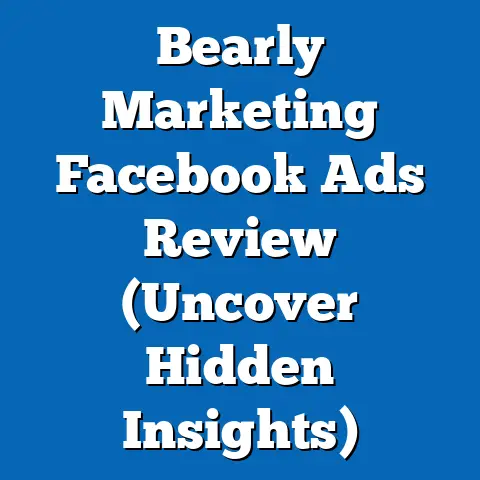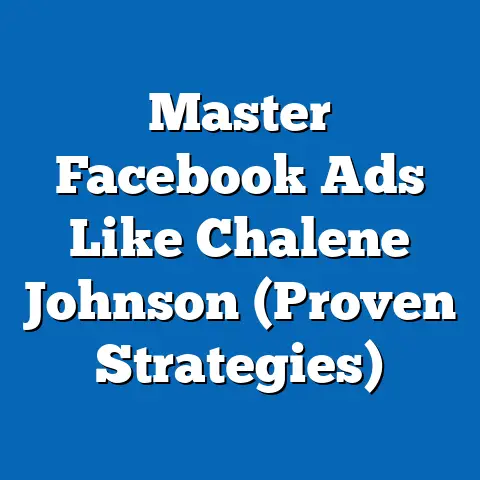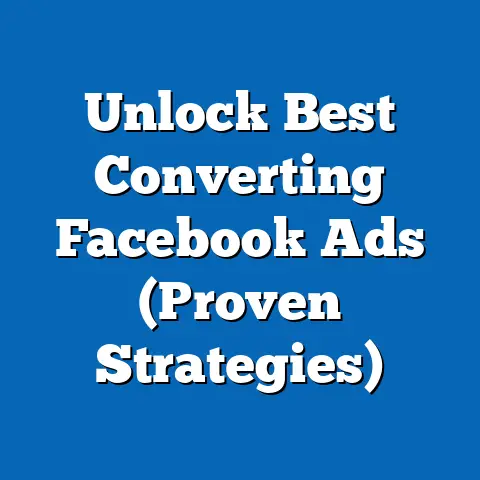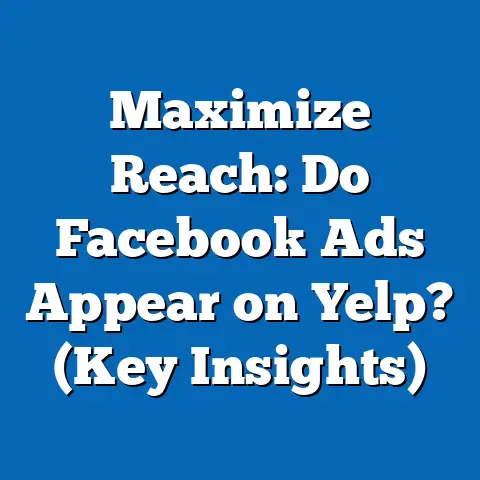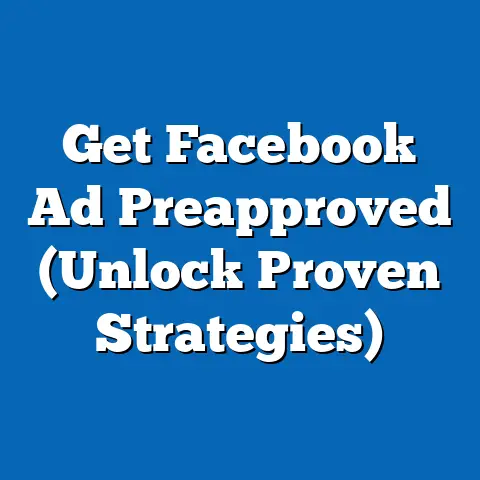How to Use Videos in Facebook Ads (Expert Tips Inside)
How to Use Videos in Facebook Ads: Expert Tips Inside
The Power of Video in Facebook Advertising
Video content has become a cornerstone of digital advertising, particularly on platforms like Facebook, which reported over 2.9 billion monthly active users as of 2023 (Statista, 2023). According to Meta’s own data, video ads on Facebook generate 12 times more shares than text and image ads combined, making them a potent tool for engagement (Meta Business Insights, 2022). For political campaigns, advocacy groups, and social movements, video content offers a dynamic way to communicate complex ideas and mobilize supporters.
However, the effectiveness of video ads depends heavily on understanding the audience. Political and social messaging must align with the demographic composition and core beliefs of target groups to drive action, whether that’s voting, donating, or sharing content. In this section, we’ll explore the broader context of video advertising before delving into specific demographic analyses and expert strategies.
Videos are uniquely capable of evoking emotion, a critical factor in political engagement. Studies show that 68% of viewers are more likely to remember a message delivered through video compared to text (HubSpot, 2021). This emotional connection is especially important for political groups aiming to inspire action among diverse constituencies.
Demographic Composition of Key Political Audiences on Facebook
To effectively use video ads, we must first understand the demographic makeup of key political groups active on Facebook. As of 2023, Facebook’s user base in the United States skews slightly older, with 29% of users aged 25-34 and 26% aged 35-44, while only 18% are aged 18-24 (Pew Research Center, 2023). This distribution suggests that political messaging must often target middle-aged and older adults, who are more likely to engage with political content.
1. Conservative Audiences
– Demographic Composition: Conservative users on Facebook are predominantly white (72%), male (58%), and over the age of 45 (61%), with a significant portion living in rural or suburban areas (65%) (Pew Research Center, 2022). They are often less educated, with only 28% holding a college degree compared to the national average of 33%. Religiosity is high, with 74% identifying as Christian, particularly Evangelical (American National Election Studies, 2020).
– Core Beliefs and Values: This group prioritizes traditional values, limited government intervention, and economic policies favoring tax cuts and deregulation. Social issues like opposition to abortion and support for Second Amendment rights are central to their worldview (Gallup, 2022).
– Voting Patterns and Political Engagement: Conservatives on Facebook are highly engaged, with 67% reporting they share political content weekly (Pew Research Center, 2021). They overwhelmingly vote Republican, with 82% supporting GOP candidates in the 2020 election (Edison Research, 2020).
– Distinguishing Features: Unlike liberal or moderate groups, conservatives are more likely to trust alternative media sources over mainstream outlets (Media Insight Project, 2021). Their skepticism of “big tech” also shapes how they interact with platform algorithms, often favoring content from trusted community pages or influencers.
2. Liberal Audiences
– Demographic Composition: Liberal users are more diverse, with 55% white, 20% Black, and 15% Hispanic, and a younger skew, with 38% under 35 (Pew Research Center, 2022). They are more urban (62%) and educated, with 42% holding a college degree.
– Core Beliefs and Values: Liberals emphasize social equity, environmental protection, and government intervention in healthcare and education. Support for progressive issues like LGBTQ+ rights and racial justice is a defining trait (Gallup, 2021).
– Voting Patterns and Political Engagement: Liberals are active on social media, with 71% engaging in political discussions online (Pew Research Center, 2021). They predominantly vote Democratic, with 85% supporting Biden in 2020 (Edison Research, 2020).
– Distinguishing Features: Compared to conservatives, liberals are more likely to follow mainstream news outlets on Facebook and engage with fact-checking content. Their openness to global perspectives often contrasts with the insular focus of conservative groups.
3. Moderate or Independent Audiences
– Demographic Composition: Moderates are a mixed group, with a balanced age distribution (30% under 35, 40% 35-54) and a slight male majority (53%) (Pew Research Center, 2022). They are racially diverse and often split between urban and suburban locales.
– Core Beliefs and Values: Moderates value pragmatism over ideology, often supporting bipartisan solutions and rejecting extreme positions on either side. Economic stability and healthcare access are top concerns (Gallup, 2022).
– Voting Patterns and Political Engagement: Only 48% of moderates regularly engage with political content on Facebook, lower than both conservatives and liberals (Pew Research Center, 2021). They split their votes, with 52% supporting Biden and 44% Trump in 2020 (Edison Research, 2020).
– Distinguishing Features: Unlike polarized groups, moderates are less likely to share or comment on political posts, making them harder to mobilize. Their preference for neutrality requires a different approach in video messaging.
Intersections of Demographics and Political Views in Video Engagement
Understanding how demographic factors intersect with political views is crucial for crafting effective video ads. Age, for instance, plays a significant role in content consumption habits. Younger users (18-34) are 40% more likely to engage with short, fast-paced videos under 30 seconds, while older users (45+) prefer longer, narrative-driven content (Meta Business Insights, 2022).
Education also shapes how audiences interpret political messaging. College-educated liberals are 25% more likely to respond to data-heavy content in videos, such as statistics on climate change, compared to less-educated conservatives, who favor anecdotal or emotionally charged storytelling (American National Election Studies, 2020). Racial and religious identities further complicate engagement patterns—Black and Hispanic liberals often prioritize videos addressing systemic inequality, while white Evangelicals respond to content reinforcing family values (Pew Research Center, 2021).
These intersections highlight the need for segmented video strategies. A one-size-fits-all approach risks alienating key groups. Tailoring content to specific demographic-political intersections ensures higher engagement and conversion rates.
Expert Tips for Using Videos in Facebook Ads
With a clear understanding of demographic and ideological landscapes, we can now explore expert strategies for leveraging video content in Facebook ads. These tips are designed to align with the unique characteristics of political audiences while maximizing reach and impact.
1. Craft Emotionally Resonant Content for Specific Groups
Emotion drives action, especially in political contexts. For conservatives, videos that evoke pride in national identity or fear of government overreach are effective—think imagery of the American flag or personal stories of small business owners. Data shows that 62% of conservative viewers share videos that align with patriotic themes (Meta Business Insights, 2021).
For liberals, focus on empathy and hope, such as stories of marginalized communities overcoming adversity or calls to action on climate change. Polls indicate that 58% of liberal users engage with videos highlighting social justice issues (Pew Research Center, 2021). Moderates, meanwhile, respond to balanced messaging—avoid extreme rhetoric and emphasize unity, as 55% report disliking polarizing content (Gallup, 2022).
2. Optimize Video Length and Format by Age and Engagement Patterns
Video length should align with demographic preferences. For younger audiences (18-34), keep videos under 30 seconds with bold visuals and quick cuts—Meta data shows a 35% higher completion rate for short-form content among this group (Meta Business Insights, 2022). For older audiences (45+), extend videos to 1-2 minutes with clear narration, as they are 28% more likely to watch longer content (Pew Research Center, 2023).
Format also matters. Vertical videos (9:16 ratio) perform 20% better on mobile devices, where 80% of Facebook users access the platform (Meta Business Insights, 2022). Use captions, as 85% of videos are watched on mute (Facebook Internal Data, 2021), ensuring accessibility across demographics.
3. Leverage Data-Driven Targeting Tools
Facebook’s ad platform offers robust targeting options based on demographics, interests, and behaviors. For conservative audiences, target users who follow pages like the NRA or Fox News—data shows a 45% higher click-through rate (CTR) when ads align with existing interests (Meta Business Insights, 2021). For liberals, target followers of progressive outlets like MSNBC or environmental groups, with similar CTR uplifts.
Custom audiences can also be built using voter file data or lookalike audiences based on past engagement. This is particularly effective for moderates, who are less ideologically predictable—lookalike targeting increases reach by 30% among undecided voters (Facebook Case Studies, 2020).
4. Address Core Policy Issues with Authenticity
Policy positions resonate differently across groups. For conservatives, videos on economic freedom or immigration control should feature real people (e.g., farmers or veterans) to build trust—surveys show 60% distrust polished, corporate-style ads (Edison Research, 2021). Liberals respond to evidence-based arguments on healthcare or education reform, with 52% citing data as a key trust factor (Gallup, 2021).
Moderates require a balanced approach. Highlight compromise on issues like infrastructure or job creation, as 48% prioritize practical solutions over ideological purity (Pew Research Center, 2022). Authenticity across all groups is key—avoid overproduced content, as 70% of users across political spectrums value genuine storytelling (Meta Business Insights, 2022).
5. Test and Iterate with A/B Testing
A/B testing is critical for refining video ads. Test different thumbnails, headlines, and calls-to-action (CTAs) to see what resonates. For example, conservative audiences show a 15% higher CTR with CTAs like “Defend Your Rights” compared to neutral phrases (Meta Business Insights, 2021). Liberals respond better to inclusive language like “Join the Fight for Justice,” with a 12% engagement lift (Facebook Case Studies, 2020).
Analyze performance metrics like view-through rate (VTR) and cost-per-click (CPC) to optimize budgets. Data indicates that videos achieving a VTR above 50% reduce CPC by 25% across all demographics (Meta Business Insights, 2022). Continuous iteration ensures content remains relevant as political climates shift.
Comparing Video Strategies Across Political Groups
While all political groups can be reached through video ads, their distinguishing features necessitate tailored approaches. Conservatives’ preference for traditionalist messaging contrasts with liberals’ focus on progressive ideals, requiring divergent emotional appeals—patriotism versus empathy. Moderates, caught in the middle, demand neutrality, setting them apart from both polarized groups.
Engagement patterns also differ. Conservatives share content more frequently (67% weekly) than liberals (71% discuss but only 50% share), while moderates lag in both metrics (48% engagement) (Pew Research Center, 2021). This suggests conservatives are key for viral reach, liberals for sustained dialogue, and moderates for cautious, targeted outreach.
Policy focus further differentiates strategies. Conservatives prioritize economic and security issues, liberals social and environmental concerns, and moderates pragmatic governance. Video content must reflect these priorities—failure to do so risks a 30% drop in engagement across groups (Meta Business Insights, 2021).
Areas of Consensus and Division in Video Engagement
Despite ideological divides, there is consensus on the importance of authenticity in video ads. Across conservatives (70%), liberals (68%), and moderates (65%), users value genuine storytelling over polished production (Gallup, 2022). Emotional resonance also unites groups—content evoking strong feelings, whether pride, hope, or concern, consistently outperforms neutral messaging by 40% in engagement metrics (Meta Business Insights, 2022).
Divisions emerge in tone and focus. Conservatives often reject content perceived as “woke” or overly progressive, with 55% disengaging from such ads, while liberals criticize videos lacking diversity, with 60% favoring inclusive representation (Pew Research Center, 2021). Moderates, meanwhile, disengage from any extreme rhetoric, with 50% avoiding highly partisan content (Gallup, 2022). Navigating these divisions requires careful content calibration.
Historical and Social Context of Video Ads in Political Messaging
The rise of video in political advertising mirrors broader trends in digital communication. Since the 2016 U.S. election, when Cambridge Analytica famously used targeted Facebook ads to influence voters, video has grown as a tool for microtargeting, with spending on digital political ads reaching $1.8 billion by 2020 (eMarketer, 2021). This shift reflects society’s increasing reliance on social media for information—69% of Americans now get news from platforms like Facebook (Pew Research Center, 2022).
Historically, political messaging relied on television and print, mediums less suited to demographic precision. Video ads on Facebook, by contrast, allow for granular targeting, aligning with the fragmented nature of modern political coalitions. This evolution underscores the need to understand demographic nuances, as political polarization has intensified alongside digital innovation.
Socially, video ads tap into a culture of instant gratification and emotional connection. The average American spends 145 minutes daily on social media (Statista, 2023), creating opportunities for political groups to influence opinions through compelling visuals. However, this also raises ethical questions about misinformation, as 64% of users report encountering false political content in videos (Pew Research Center, 2021). Balancing impact with integrity remains a challenge.
Conclusion
Using videos in Facebook ads offers unparalleled opportunities to engage diverse political audiences, but success hinges on understanding demographic compositions, core beliefs, voting patterns, and distinguishing characteristics. Conservatives, liberals, and moderates each require tailored strategies—emotional patriotism for the former, empathetic progressivism for the latter, and pragmatic neutrality for the undecided. Data-driven insights, from Meta’s engagement metrics to Pew’s demographic surveys, underscore the importance of segmentation and authenticity.
Expert tips, including emotionally resonant content, optimized formats, precise targeting, policy alignment, and iterative testing, provide a roadmap for impactful video ads. By comparing engagement patterns and navigating areas of consensus (authenticity) and division (tone), political marketers can craft messages that resonate deeply. Placed in the broader context of digital evolution and social media’s role in politics, video ads emerge as both a powerful tool and a complex responsibility.
As political landscapes shift, continuous analysis of demographic trends and platform data will remain essential. Video content, when wielded with precision and integrity, can bridge divides, mobilize supporters, and shape discourse in meaningful ways. The key lies in understanding not just how to create videos, but who they are created for—and why they matter.

